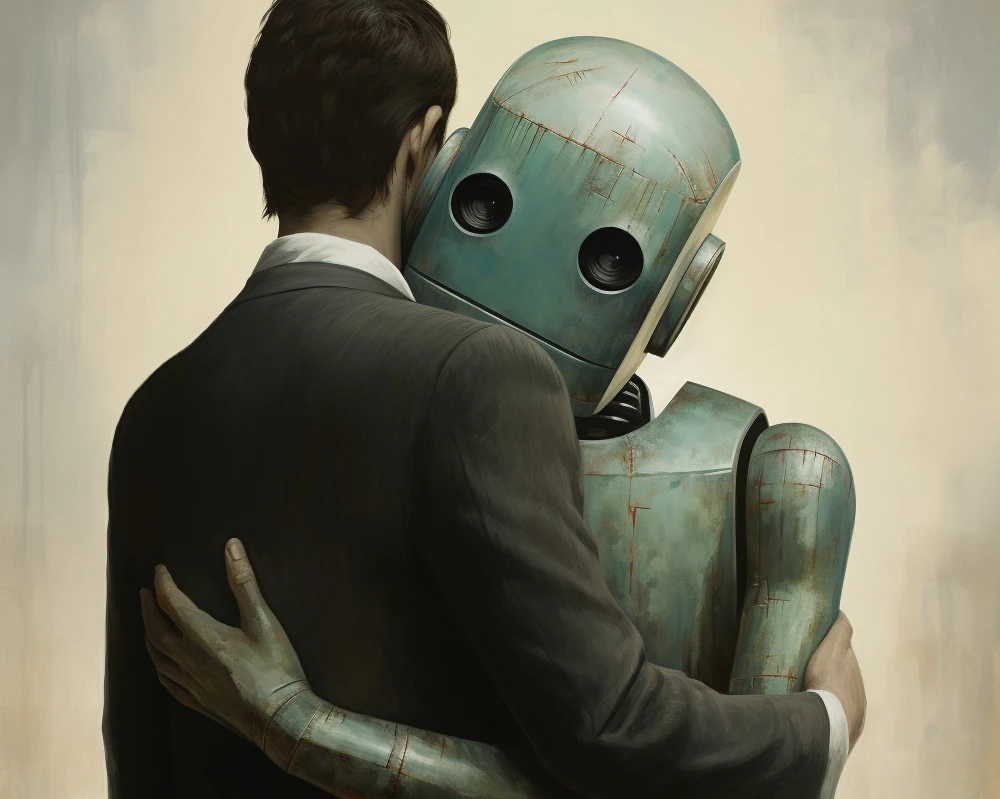
Lead AI without Losing Your Creative Soul
There’s a strange quietness settling over the digital landscape. A year or two ago, the conversation around AI was a deafening roar of utopian promises and dystopian fears. Now, the dust is settling, and we’re left with the tools in our hands. The question is no longer if we should use AI, but how. And frankly, I’m worried we’re getting it wrong.
We’re seeing the rise of the ‘generative generic’—a world of perfectly adequate but soulless user interfaces, predictable copy, and stock-like imagery, all bearing the subtle, algorithmic fingerprint of their non-human creators. By using AI design tools merely for efficiency, we risk becoming excellent operators of automation engines rather than creative directors of groundbreaking products.
The solution isn't to discard these powerful tools. It's to fundamentally change our relationship with them. We need to start practising human-centred AI design, treating AI not as a replacement for our skills, but as an endlessly energetic, slightly naive, and incredibly powerful apprentice.
The Apprentice, Not the Art Director
Think of the best apprentice you’ve ever worked with. They can handle the legwork. They can generate dozens of options, analyse vast amounts of data, and execute repetitive tasks flawlessly. But you wouldn't ask them to define the project's soul. You wouldn't trust them with the final strategic decision. That’s your job.
This is the model for a healthy relationship with AI. It excels at divergence—creating a mountain of possibilities. Your role is convergence—using your taste, experience, and empathy to find the single, brilliant peak in that mountain range.
For example, instead of asking ChatGPT to "write UX copy for a checkout button," try this: "Act as a conversion-focused copywriter. Generate 20 variations for a checkout button for an e-commerce site selling handmade pottery. Provide options that evoke urgency, security, excitement, and simplicity."
The first prompt gives you a generic answer. The second gives you a spectrum of creative starting points that you, the human expert, can then curate and refine.
Synthesising Data, Not Outsourcing Insight
One of the most potent uses for AI is in user research analysis. Manually combing through hundreds of survey responses or interview transcripts is a soul-crushing task. This is work fit for an apprentice.
Feed your AI model a dataset of user feedback and ask it to identify recurring themes, cluster comments by sentiment, and pinpoint the most frequently used words associated with frustration. The Nielsen Norman Group notes that while AI can rapidly process this quantitative data, human analysis is still critical for understanding the 'why' behind the data—the context, the sarcasm, the unspoken needs.¹
The AI gives you the what. It finds the patterns. It’s your job to provide the why. This frees up your cognitive load to focus on what matters: turning raw data into actionable human insight.
Keeping an Ethical Compass
An apprentice lacks life experience, and so does AI. It operates on the data it was trained on, which can be riddled with biases. This is where ethical AI design becomes non-negotiable. An AI can’t understand cultural nuance or recognise when a dataset underrepresents a specific demographic. You can.
The Interaction Design Foundation stresses that designers must act as ethical guardians, continually questioning the output of AI systems.² Is this accessible? Is it inclusive? Does it inadvertently alienate a segment of our audience?
Your role is to be the human firewall, ensuring that the efficiency gained through AI doesn't come at the cost of empathy and inclusivity. An AI might suggest a colour palette that is aesthetically pleasing but fails accessibility contrast ratios. It's on you to catch it.
The Future is a Partnership
Escaping the generative rut doesn't mean working harder; it means working smarter and, more importantly, wiser. It means asserting our uniquely human skills—strategic thinking, empathy, ethical judgment, and creative taste—over the raw processing power of our new digital apprentices.
Let AI generate the fifty logos, but you choose the one that tells the right story. Let AI analyse the user data, but you create the journey map that feels human. Lead the technology; don't let it lead you. By embracing human-centered AI design, we can ensure the future is not one of bland uniformity, but one of augmented, human-led creativity.
References
¹ Nielsen Norman Group. (2024). AI for UX: A Guide to Practical Applications and Ethical Considerations.
² Interaction Design Foundation. (2025). Designing with AI: Frameworks for Ethical and Human-Centered Outcomes.


